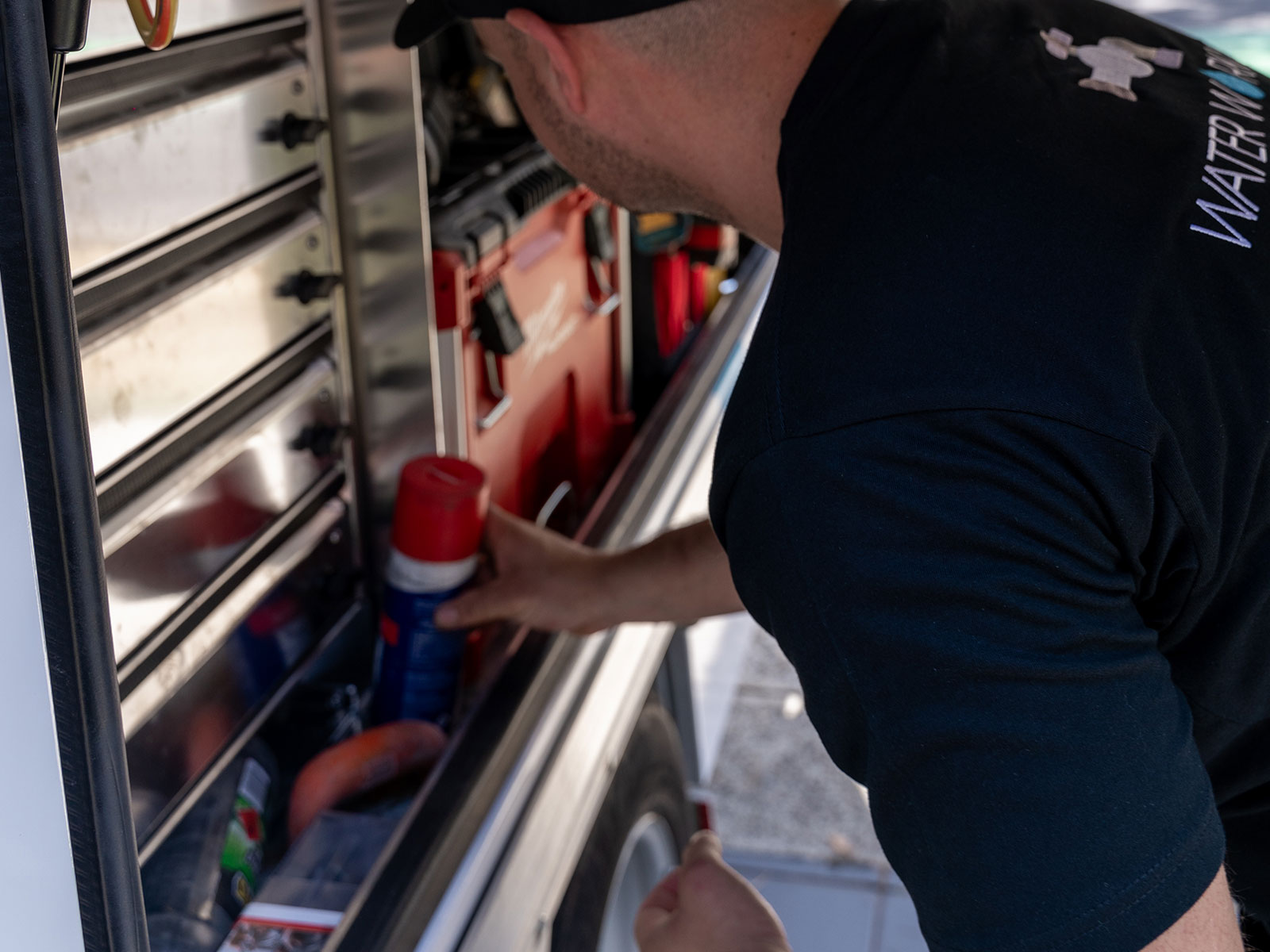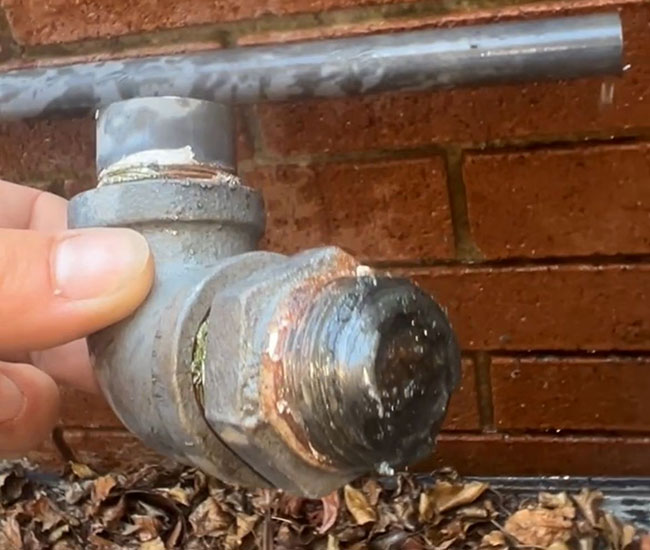When it comes to plumbing in your property and/or home, the materials used are crucial for ensuring long-term safety and efficiency. Among the various materials that have been used historically, galvanised pipes once stood as a popular choice. However, thanks to modern, scientific methods of study, it has been identified they pose several risks that homeowners and property managers should be aware of. In the following 5-minute blog, our plumbing experts will explore what galvanised pipes are, the potential health concerns they pose, their limited lifespan, maintenance requirements, and compatibility issues so you can make a more informed decision when considering replacing your current galvanised pipes.

What are Galvanised Pipes?
Galvanised pipes are steel pipes coated with a protective layer of zinc to prevent rusting. Introduced in the early 20th century, these pipes were the generally preferred option used in residential and commercial buildings for decades. The zinc layer is imperative to the galvanised pipe as it provides a barrier against corrosion. However, over time, this layer can degrade, leading to various problems.
Corrosion and Limited Lifespan
One of the primary concerns with galvanised pipes is corrosion. As the zinc layer wears away, the underlying steel is exposed to water and oxygen, leading to rust and corrosion. This process not only weakens the pipes, but also shortens their lifespan significantly compared to modern materials like PVC or copper.
The corrosion inside galvanised pipes often leads to scale (otherwise referred to as limescale) buildup, which further restricts water flow and reduces water pressure. This buildup can also create an environment where bacteria can grow, potentially impacting the quality of water flowing through your property.
Scale Buildup and Flow Reduction
The buildup of scale within these pipes is a major issue. Minerals from hard water accumulate over time, narrowing the passage through which water flows. This not only leads to reduced water pressure, but can also result in uneven water distribution, affecting the efficiency of water heaters and other appliances that are connected to water.
Potential Health Concerns
The risks to health from galvanised pipes are significant. As the pipes corrode, rust and other metals can seep into the drinking water supply, potentially leading to health issues. Older pipes may also contain lead at the joints, which can dissolve into your water supply. According to a study by the Australian Government, households with galvanised pipes might experience elevated levels of lead and other metals in their water, posing a serious health risk.
Maintenance Requirements
Maintaining galvanised pipes requires regular checks for signs of deterioration, such as discolouration of water or reduced water pressure. These pipes also need periodic cleaning to remove any scale buildup. However, maintenance can only mitigate, not eliminate, the problems associated with galvanised pipes.
Compatibility Issues
Compatibility is another challenge with galvanised pipes. Connecting them to copper or other types of metal without the proper coupling can lead to galvanic corrosion. This type of corrosion occurs when two different metals are directly connected in the presence of an electrolyte, such as water, accelerating the corrosion process.
Frequently Asked Questions
What do I do if I have galvanised pipes?
If you discover that your property has galvanised pipes, it’s important to take informed steps to manage and eventually replace them to ensure the safety and efficiency of your plumbing system.
How do I know if I have galvanised pipes
There’s multiple ways to check if you have galvanised pipes, including checking the colour and texture of your pipes, looking for rust, examining the age of your property and using a magnet – if it sticks, it’s most likely galvanised.
What can I do to prevent my galvanised pipes from rusting
While galvanised pipes are inherently prone to corrosion over time, there are several measures you can take to slow down this process like regular flushing, using corrosion inhibitors and maintaining neutral PH levels in your water.
Should I replace my galvanised pipes?
If your galvanised pipes are showing signs of deterioration or causing frequent issues, it may be advisable to replace them with newer, more durable plumbing materials.
Can I paint over galvanised pipes?
Yes, painting over galvanised pipes can help provide additional protection against corrosion. However, it’s essential to use a paint specifically designed for use on metal surfaces and to prepare the pipes properly before painting.
Should I consult a professional plumber for galvanised pipe concerns?
Yes, consulting a professional plumber is recommended for any issues or questions regarding galvanised pipes. They can assess the condition of your plumbing system, offer expert advice, and perform any necessary repairs or replacements.
Can galvanised pipes be replaced with other materials?
Yes, galvanised pipes can be replaced with materials such as copper, PVC, or PEX. Each material has its advantages and suitability depending on factors like budget, local building codes, and specific plumbing needs.
How can I maintain galvanised pipes?
Regular maintenance can help prolong the lifespan of galvanised pipes. This includes inspecting for signs of corrosion, promptly repairing any leaks, and ensuring proper drainage to minimise moisture exposure.
What To Do Instead: Replace Your Galvanised Pipes
Given the numerous issues associated with galvanised pipes, replacement is often the best solution. Modern plumbing materials such as PVC, PEX, or copper offer longer lifespans, better health safety profiles, and fewer maintenance requirements. Switching to these newer materials can enhance water quality, system reliability, and overall property value. Additionally, another option could be investing in a water filtration system. In a previous blog post, we questioned if Sydney’s water is clean, where our verdict explored the idea that investing in a single tap water filter or whole-home filtration system is a proactive step you can take to enhance the water quality for your home.
While galvanised pipes were a standard plumbing solution in the past, their disadvantages, particularly concerning health risks and system efficiency, make them less desirable today. Property owners should consider assessing the condition of existing galvanised plumbing and plan for its replacement with safer, more durable materials.

If you are concerned about the integrity of your plumbing system, it is best to consult with professional plumbers like us at Water Workx Plumbing. Our expertise means we’ll guide you to make the right choices, ensuring your plumbing system is safe, efficient, and up-to-date, safeguarding your property and your family’s health.
